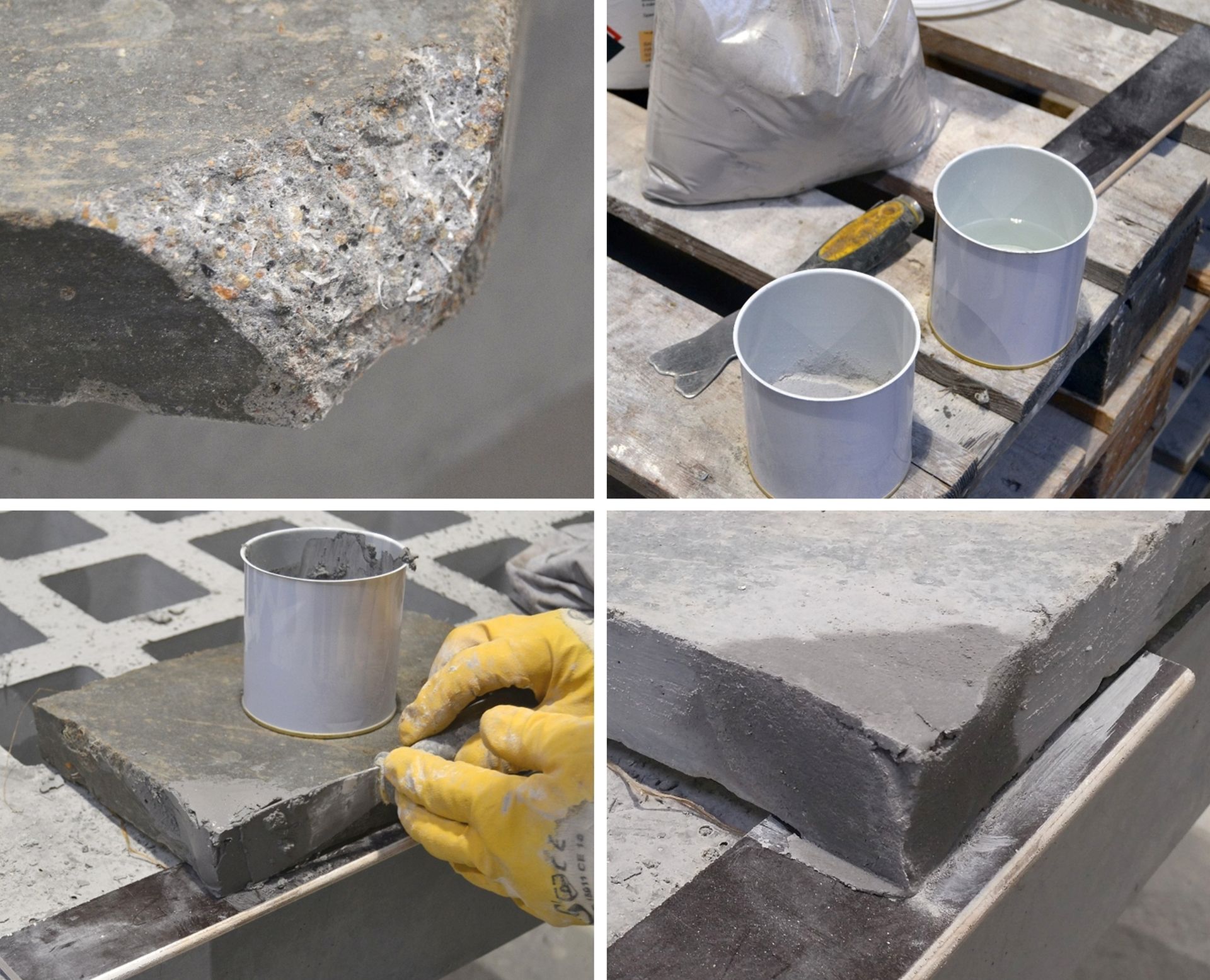You want to read more blogposts about UHPC?
10.12.2020 - Repairs in UHPC
Guidelines for minor repairs of CRC i2 elements

Typical minor damage (chipping) of an edge of a CRC element.
After the recent post on repairs, chance was that one of my UK clients called because of chippings of a few edges and corners on some beam elements, asking for specific directions on how to repair them. Hence, I decided to add an actual guideline to the general explanation in the previous post. And finish level and the visual expression of UHPC regularly gives rise to discussions, and has required us to hone our skill in repairing damages and mediating differences in expression.
So here goes:
Repairs should only be attempted in appropriate conditions, i.e. dry weather (or a sheltered location) at temperatures above 5˚C – which includes the temperature of the element itself. It is not possible to make repairs if the element is frozen solid after a cold night, even though the air temperature is higher than 5˚C – it takes time for a large element to adjust in temperature to the surroundings.
Before making the repair, it is recommended to make a small “mock-up repair” on a concrete tile or similar, to get a feel for the workability of the repair material before repairing the damaged element – this is what we have done to illustrate the repair procedure in this blog.
Hi-Con supplies a special pre-mix for repairs, either grey or light-coloured. To apply it with a good result, follow below guidelines. You may also watch the short instruction video:
- Clean the damaged area of loose material, dirt and dust, using a steel brush and compressed air or similar.
- Moisten the damaged area using a moist sponge
- Mix the pre-mix with water – a little at a time - and stir rigorously between each addition of water until the consistency is like soft clay. If the mix is too soft, add more pre-mix powder to compensate.
- Use a spatula to press the repair mix firmly into the damaged surface to ensure a good bond, and roughly shape the repair material as required. Small plates, rulers, angles etc. can be used to ensure that the material is placed correctly and aligned with edges, lines and surfaces.
- Let the repair rest for app. 30 minutes until the surface stiffens (depending on temperature – shorter in summer conditions, longer in cold conditions, especially if the substrate is cold.
- Use a firm moist sponge to smoothen the surface and level out the repair against the surrounding surfaces – avoid getting repair material on the undamaged surfaces as much as possible, since the colour will be somewhat different.
- Let the repair harden fully – the time required is highly dependent on temperature, but normally it is required to wait until the next day.
- Use fine sandpaper or a polishing pad if required to further smoothen the surface and blur the transition from repair and the surrounding element surfaces. Take care not to damage surrounding surfaces.
In some cases, and depending on the extend of the damage it may be necessary to repeat the procedure to ensure an optimal result. Below images illustrate the individual steps.

Mock-up damage (chipped corner) after cleaning (upper left), the required tools for the repair (upper right), plates, rulers etc. is a help during placement of the material (lower left), one addition of material is not always enough, and it is necessary to repeat the procedure (lower right)

The repaired damaged corner mock-up. Corners requires care and patience to achieve a good result. Even if the geometry and texture is well matched, the color will always deviate, so repairs will always be visible to some